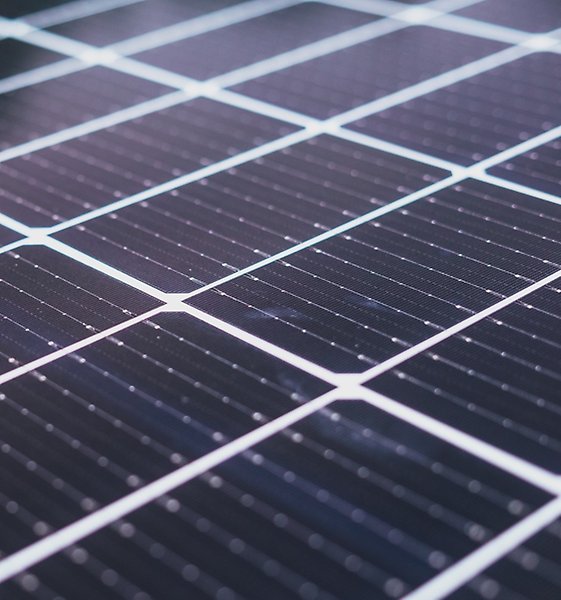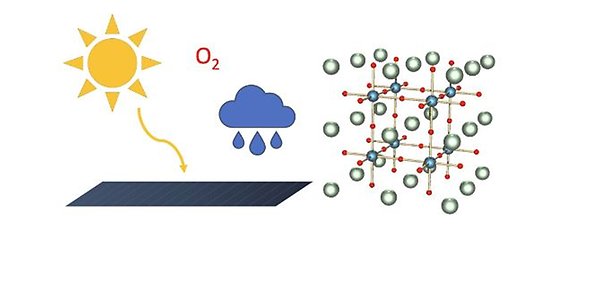1. Advanced PV Technology

SOLVE will advance research and innovation on solar cell technology, including development of high efficiency tandem solar cells and validation of PV modules with excellent long-term stability. Such improvements aim at lower resource consumption, lower capital investment and lower land use for each unit of solar energy produced, giving an overall sustainability benefit. Research focuses also on electrical contacts, especially with silicon solar cells. Future cell concepts are partly based on busbarless solar cells where the solar cell fingers are directly contacted with wires or tapes. We also look at new solar module concepts.
Theme Leaders

Professor at Department of Materials Science and Engineering, Solar Cell Technology
Projects in Theme 1
PhD project: High bandgap perovskite solar cells

Lead bromide perovskite with high bandgap and good stability has aroused broad interest for utilization in perovskite solar cells (PSCs) with high photovoltage, especially as a candidate for the front cell of tandem solar cells. However, the efficiency of lead bromide PSCs is still much lower than the standard lead iodide PSCs. This PhD project focused on making FAPbBr3-based high-band gap perovskites and solar cells.
We use different advanced techniques to understand these devices from fundamental to applied level, and we also investigate different ways to prepare solar cells with different structures. The goal is to find efficient and stable high-band gap perovskites. The primary plan is to apply them in tandem devices to make higher-efficiency solar cells.
Yawen Liu - PhD student at Uppsala University
PhD project: Synthesis and characterization of new contact materials for perovskite solar cells

Metal halide perovskites have witnessed substantial success as an active material in the field of photovoltaics. In perovskite solar cells (PSCs), the active material is sandwiched between transport layers. These layers facilitate the transport of charge carriers from the active layer to their respective contacts. Interfaces that are formed between perovskites and transport layers influence the performance and stability of solar cells. In this PhD project, the synthesis of different perovskites and the development of transport layers using the atomic layer deposition technique are done in parallel. The interfaces formed are studied, and the deposition processes are modified and optimized accordingly to further improve the performance and stability of PSCs.
Bhavya Rakheja - PhD student at Uppsala University
PhD project: Characterization methods for high stability thin film solar cells

The most prominent candidate for the next generation of solar cells is perovskite solar cells, reaching above 25% in efficiency in labs. However, these materials have a lot of room for improvement in terms of stability. Solar cells have to remain stable for many years of operation which means they have to withstand different amount of light exposure, heat and moisture. It is therefore crucial to understand how the material is affected by different types of stress. In this PhD-project optical and electrical characterization methods, focused on photoluminescence and electroluminescence is used to investigate the stability of mainly perovskites.
Klara Kiselman - PhD student at Uppsala University
PhD project: Contact layers for high stability, high efficiency perovskite solar cells (Uppsala, Evolar)
The goal is to have the most efficient transparent contact structure, which allows to use perovskite solar cells as top cells in tandem structures. Contact layers will be fabricated with atomic layer deposition, where composition can be tailored to give perfect match between the perovskite and the contact layers. Perovskite materials will be fabricated at UU (wet process) and at First Solar ETC (vacuum based processes)
PhD project: Evaluation of long term stability and energy yield of high bandgap perovskite solar cells suitable for tandem structures (Uppsala, Karlstad, Evolar)
The stability and performance will be evaluated with methods based on photoluminescence and electroluminescence and compared to characterization with JV and EQE. Perovskite materials will come from Karlstad University, Uppsala University and First Solar ETC.
PhD project: Novel contacting methods for Silicon solar cells (Karlstad, Uppsala, Sticky Solar Power)
Key theme partners: Evolar, Sticky Solar Power, Glava Energy Center

%20(2)%20Markus%20Rinio.jpg)